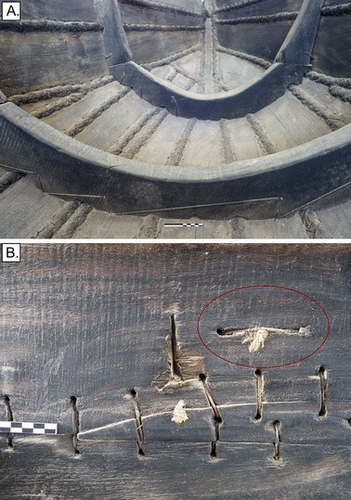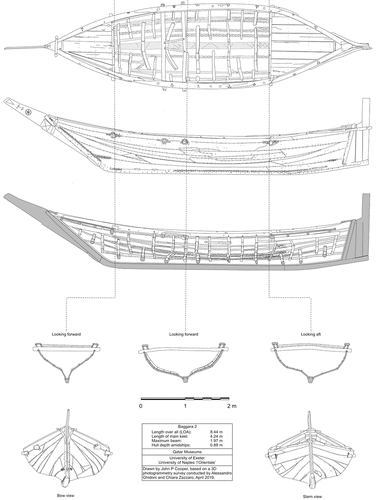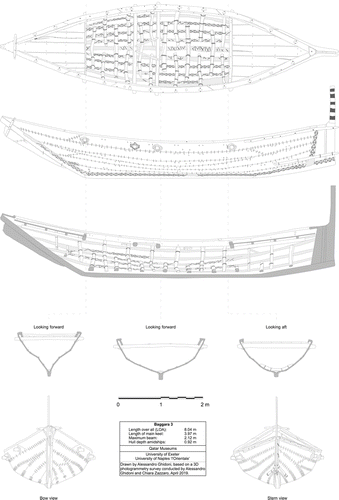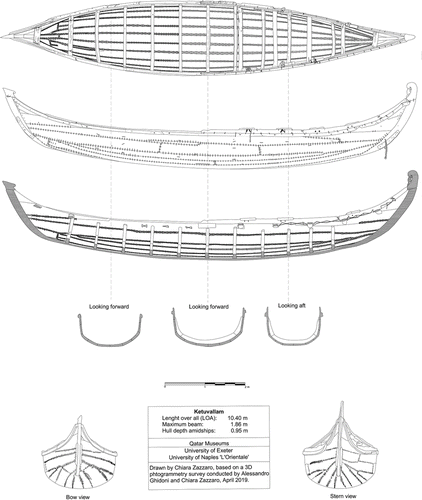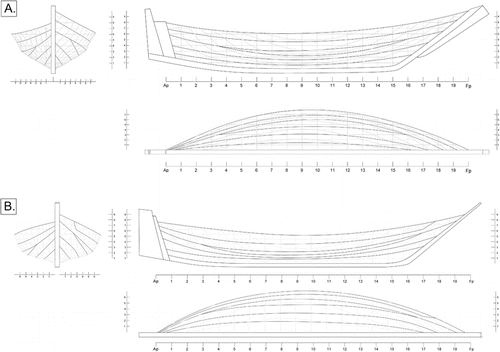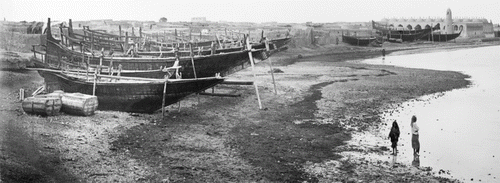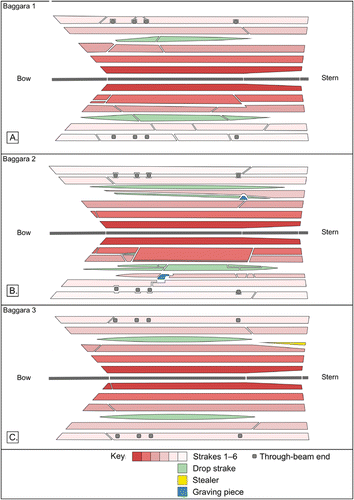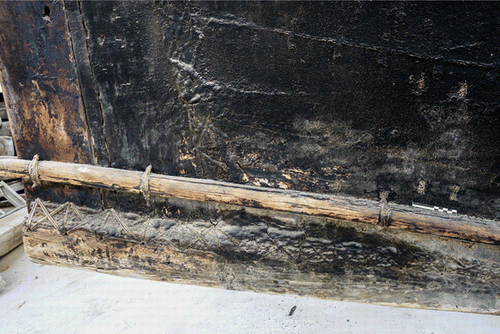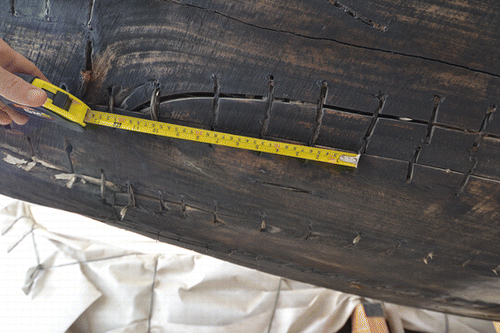Figures & data
Figure 7 Photogrammetry models of: A‐C) baggāras 1–3; and D) kettuvallam B. (See also supplementary information. Images: Alessandro Ghidoni and Chiara Zazzaro).
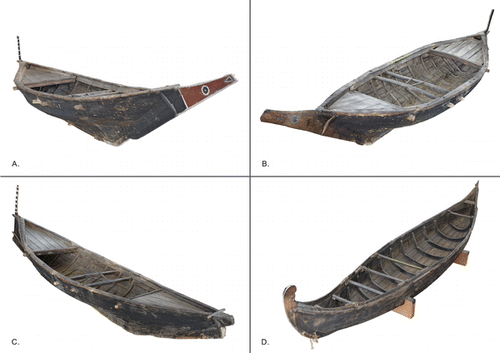
Table 1 Principal dimensions and ratios of the Qatar Museums sewn boats, with comparisons to other published sewn watercraft of the Western Indian Ocean
Figure 9 Construction features of the keels and posts of the QM baggāras: A) oblique dowels in the keel of baggāra 2, fixing the garboard strake; B) the jointing of the keel to the ‘false’ outer stem of baggāra 1, with perpendicular dowel suggesting the locking of inner jointing; C) rabetting of the outer stem of baggāra 2 around the hood‐ends; D) a short run of |X|X|X| stitching on the outboard hull of baggāra 2, related to the stitching of the ‘false’ outer stem; E) stitching of the hood‐ends of baggāra 1 direct to the first plank of the fashīn; F) stitching of the hood‐ends of baggāra 2 to a dedicated sternpost timber: the stitching has been removed. (Images: John P. Cooper, Alessandro Ghidoni, Chiara Zazzaro).
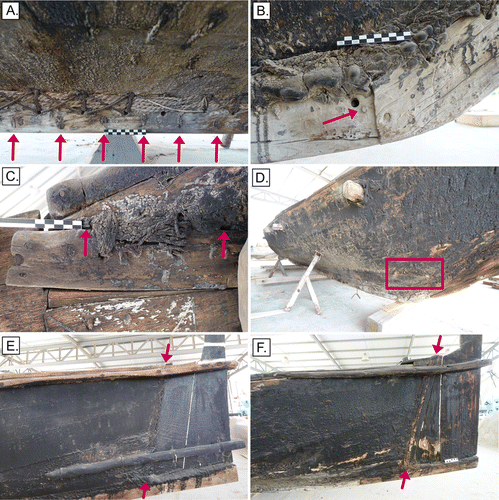
Figure 11 A) The prow timber on QM baggāra 1; B) detail of its widely spaced lashings. (Images: Alessandro Ghidoni and Chiara Zazzaro).

Table 2 Indicative characterisations of the cordage of the Qatar Museums sewn boats
Table 3 Indicative dimensions of the dowels of the Qatar Museums baggāras
Figure 12 Wadding materials on the QM baggāras: A) grassy wadding over the inboard seams between the garboards and the keel on baggarā 1; and B) on the planking seams of baggāra 3; C) fibre ropes stretched along the outboard seam of the keel and garboards on baggāra 2; D) a small section of possible repair wadding made of a reed‐like plant inboard on baggāra 1. (Images: John P. Cooper, Alessandro Ghidoni, Chiara Zazzaro).
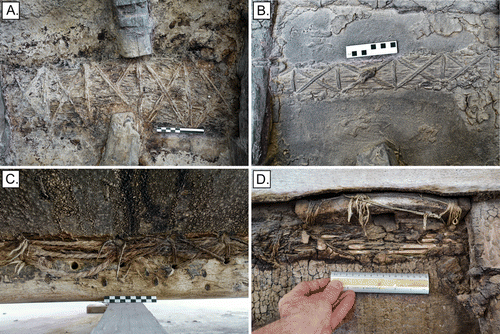
Figure 13 Diagram representing the sewing pattern of the keel‐garboard assembly of the QM baggāras. (Image: Alessandro Ghidoni).

Figure 14 Hypothetical reconstruction of the sewing sequence of the keel‐garboard assembly of the QM baggāras. (Image: John P. Cooper).
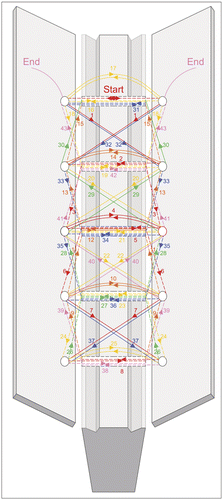
Figure 15 Diagram representing the pattern and sequence of the plank‐to‐plank sewing of the QM baggāras. (Image: Alessandro Ghidoni).

Figure 16 The frame lashing of the QM baggāras: A) view of a half‐frame inside the hull of baggāra 1; B) close‐up of a frame fastened by cordage threaded through holes in the planking of baggāra 3 and recessed in a rebate carved on the top side; C) the frame lashing pattern visible on the outside of the hull of baggarā 3, below the planking seam. (Images: John P. Cooper, Alessandro Ghidoni, Chiara Zazzaro).
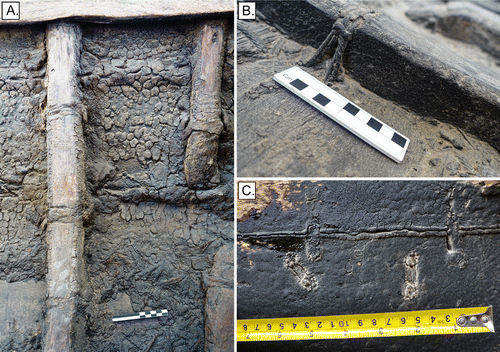
Figure 18 A) Outboard lashing of a through‐beam on baggāra 3; B) hypothetical reconstruction of the sewing sequence of the QM baggāra through‐beams based on Vosmer's reconstruction of the sewing of a beam on a battīl (2005: 179, fig. 4.2.5); C) the through‐beams at midships on a battīl, Muscat, Oman. Note the similarities with the baggarā through‐beams; D) through‐beam of the Jewel of Muscat reconstruction, based on the 9th‐century Belitung wreck. (Images: Chiara Zazzaro, Alessandro Ghidoni).
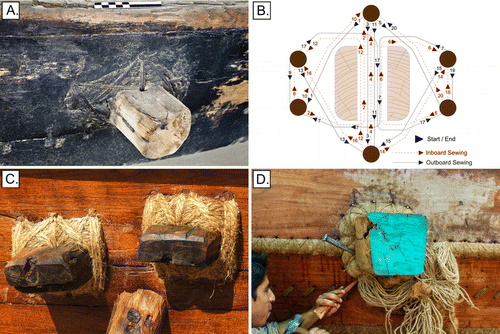
Figure 19 Wadding materials in the through‐beam lashings of the QM baggāras: A) thick fibre ropes; B) grass wadding on baggāra 2; C) cotton rag around two of the through‐beams of baggāra 1 (Images: Chiara Zazzaro).
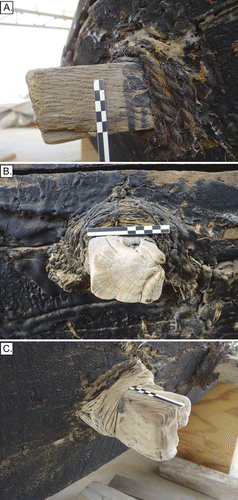
Figure 20 Oblique dowels used on the QM baggāras: A) securing a planking scarf joint on baggāra 1; B) fixing the fashīn to the keel, also on baggāra 1; C) fixing the ‘false’ stem and prow timber on baggāra 2. (Images: John P. Cooper, Alessandro Ghidoni).
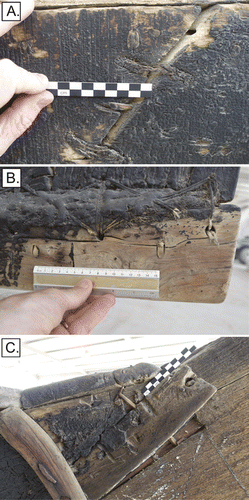
Figure 21 Bituminous coatings on QM baggāra 1: A) highly adulterated and friable bituminous coating on the inboard planking and stitching; B) purer and strongly adhered bitumen on the outboard planking (L) and fashīn (R). (Images: Chiara Zazzaro).
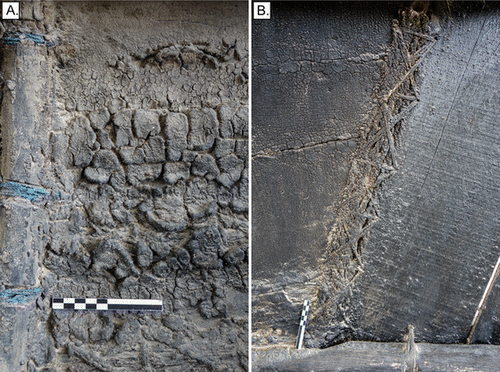
Figure 22 A white putty‐like substance within the stitching fastening the outer post to the planking of kettuvallam B. (Image: Chiara Zazzaro).
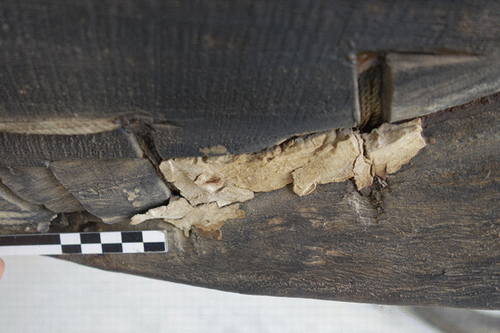
Figure 23 Decorative carved finials sewn to the posts of kettuvallam B. (Images: Alessandro Ghidoni, Chiara Zazzaro).
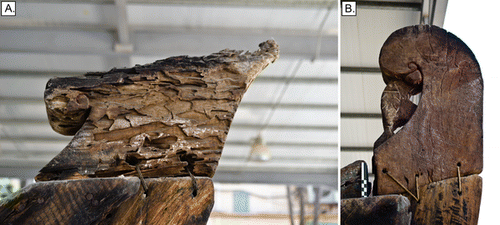
Figure 24 Painter holes occur in the stem and stern posts of kettuvallam B; the stern hole is also used to secure the steering oar. The two short timbers nailed on either side of the post are probably intended to reinforce the posts. (Image: Alessandro Ghidoni).
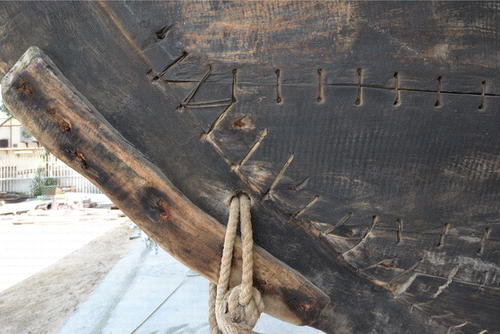
Figure 25 The nailed and screwed hood‐ends above the fourth strake of kettuvallam B. (Image: Chiara Zazzaro).
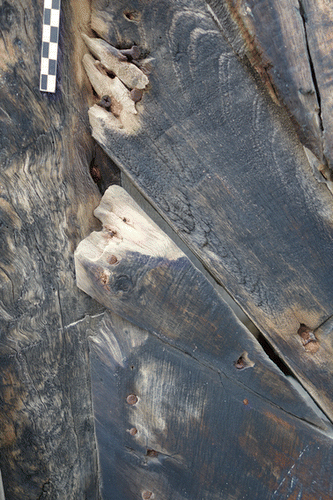
Figure 26 A rubbing strake nailed and lashed to the outer face of the sheer strake of kettuvallam B. (Image: Chiara Zazzaro).
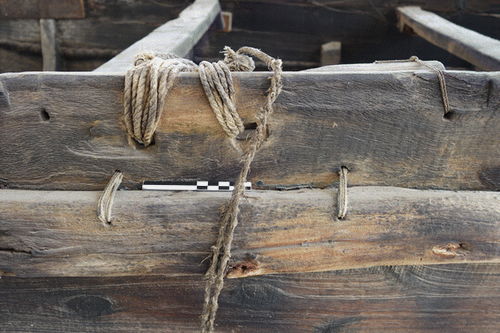
Figure 28 The sewing pattern deployed: A) inboard; and B) outboard the hull planking up to the sheer strake of kettuvallam B. (Images: Alessandro Ghidoni, Chiara Zazzaro).
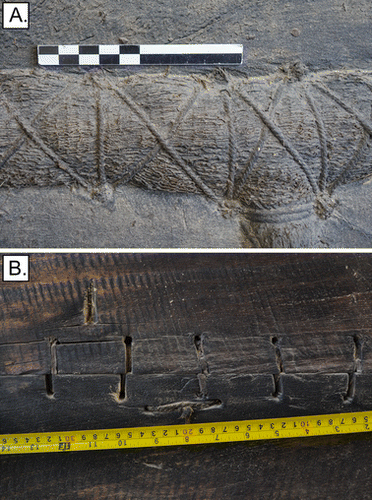
Figure 29 Metal fastenings used in the construction of kettuvallam B: A) nails driven square and obliquely secure the hood‐ends of the extension planks to the stern post; B) close‐up of one of the oblique nails edge‐fastening the hull planks; C) the large rivet fixing the thwart to the hull planking and rubbing strake. (Images: Alessandro Ghidoni, Chiara Zazzaro).
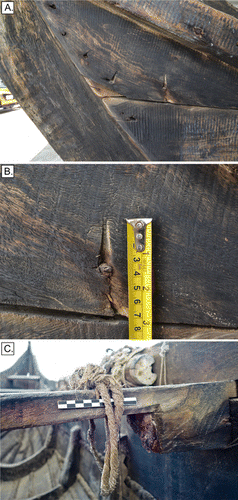
Figure 30 The wash strake and rubbing strake fastened to the sheer strake with stitching but no wadding on kettuvallam B: A) outboard, the vertical stitches act as lashings threaded through holes along the rubbing strake; B) the inboard view. (Images: Alessandro Ghidoni, Chiara Zazzaro).
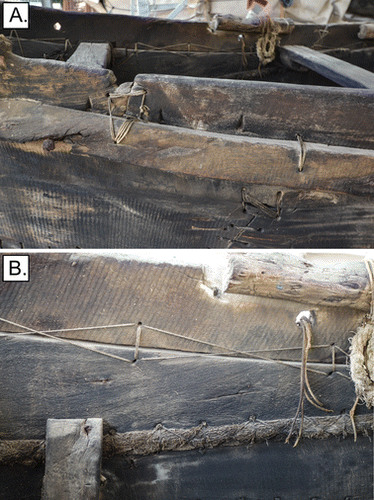
Figure 31 Frame lashings inboard on kettuvallam B, showing the cordage passing through holes drilled through the moulded face of the frames; A) the lashing cordage of the frame in the foreground is continuously threaded through each hole; B) the frame lashing outboard, highlighted in red. (Images: Chiara Zazzaro).
